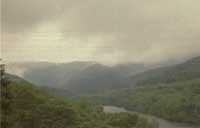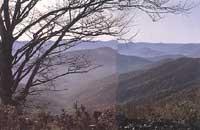By Artikutza
1992/06/01 Albisu, Alex Iturria: Elhuyar aldizkaria
The Artikutza estate has 3,700 ha. Being all terrain in Navarre, it borders to the north with the lands of Oiartzun and Lesaka, to the east with those of Arantza, to the west with those of Goizueta and to the south with those of Labaien and Zubieta.
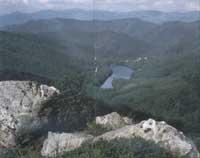
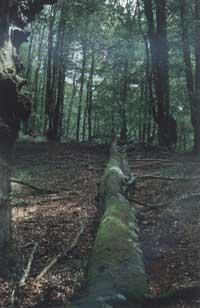
It is, therefore, a very interesting land that we have very close to the Gipuzkoa, since the barbarities of nature that has suffered and supports Gipuzkoa are remarkable, and except some areas of Aralar and Hernio, the possibilities of enjoyment that the environment can offer to lovers of the endor nature a few steps.
So, it has already been said what kind of nature we can find, but to really know Artikutza and to be able to love it maybe you need to know some history.
The rugged lands of Artikutza have always had great economic potential and, consequently, the humanization of this territory is also ancient. Our Basque ancestors have known since ancient times and it should not surprise us to leave these vast forests everything they needed to live.
Those ancient Basques could only live with hunting and fruit picking. Thus, the life possibilities of animals were unique if we look at the geomorphology of Artikutza, and at present also at the situation and potential of the different forests.
We are aware that it was they who lived, especially the many megalithic structures that have been found. And inside Artikutza, without too much difficulty, we can find structures of these characteristics in the form of tumulus, mairubaratz or dolmen.
Taking a big step throughout history, we will head to the Lower Middle Ages, when it suffered its first and almost unique ecological aggression.
This land, covered with forests, suffered the tensions of the lords from 1270 to 1815. That year (1815), coinciding with those of the mornings, the land of Artikutza was conditioned as we know today, leaving everything out of the hand of Orreaga.
But since the Middle Ages, the importance of livestock and, above all, iron metallurgy. And through them we will enter the above-mentioned ecological attack. At first the iron was melted in the holes made on the slopes of the mountains called “haizeola”. Then the exploitation went from the mountain to the rivers, using the force of the water and forming authentic ironworks.
These, called “ferrerías”, proliferated over time and suffered great advances in the search for greater performance in the structure to obtain iron. But the consequences that the civilization of this earth, despite its social progress, caused for nature were disastrous. To make charcoal, the forests were cut or the beeches were converted into small hedges, and of course, despite the extraction of the mineral, the structure of the mountains changed, both for quarries and for galleries in the mountains.
Therefore, the steel industry left its mark on the landscape.
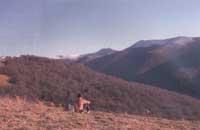
Finally, and since the scars were noticeable in the field under study, the City of Donostia-San Sebastián appropriated these lands and used them for the capture of its waters. San Sebastian has since implemented a comprehensive conservation of this land, so the current plot of Artikutza has become a unique environment for all nature lovers, since it has been allowed to acquire its ancestral aspect.
With this little history and given the importance that Artikutza has had for Basque culture, we will analyze the aspects that this land can offer us today.
If we associate the development of a forest and the interest in nature with the age of trees, and consider that the Artikutza forest is at least 73 years old (except for repopulation), it is a forest to consider. From 1919, the remaining forest was another younger, 73 years old to grow. It is therefore on the road to achieving its forest structure.
Another important factor in the development of vegetation is climate and rainfall.
The climate of Euskal Herria (at least on the coast) is based on its thermal equality, that is, in the abundance of temperatures and rains without great variations. To describe the climate of Artikutza, to say that it is one of the clearest examples of the climate of Euskal Herria due to the hyperbola of what we have said, I will not fail too much. For example, in a weather station located 20 km from the coast, a water fall of 2,735 mm occurs during the normal year.
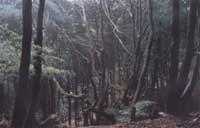
These amounts or proportions of water have the capacity to develop a real ohiana in other regions of the world. Therefore, if we attend to these precipitations, this Atlantic climate (without great variations throughout the year), the fertility of these lands and the lack of influence of the people of these 73 years, we will discover what kind of vegetation we can find.
The most remarkable aspect of this environment is the vegetation. In fact, almost the entire area of Artikutza (about 90%) is currently covered by magnificent forests, of which approximately 20% is repopulated by the City of San Sebastian.
All forests can be recorded in good development and good condition, but the impressive forests that are home to the Elama Valley, perhaps due to its remoteness, are the best preserved. The mountains that give rise to the races of this valley are the highest in Artikutza, with 1,054 m of altitude. Next to it appears mount Loitzate, with 1.046 m. There are two other mountains of a thousand meters: Alto de Terueta and Cruces, with 1.036 and 1.007 m.
Despite their altitudes, they are within the growing conditions of the forest, not even reaching the 1,600-1,700 meters high limit for the beech. In addition, as for the growth of the beeches, the best stretch of height is 500 to 1,200 meters. Therefore, in the highest places of these lands, the beech should grow, but it does not exist, and at the top of the mountains surrounding the lands of Artikutza, at least to a large extent, we will see them naked forming pastures of short grass. The sheep and horses are responsible for this situation. Although the right of access to these reefs is prohibited long ago, the City of San Sebastian continues to close its eyes.
It should be noted that these high areas of the mountains have been used as livestock for a long time and that the beech that in them was natural, would have difficulty to grow.
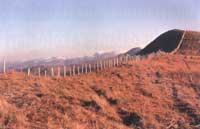
However, the expansion of the forest has been renounced, leaving the grazing of sheep and horses free.
The City of Donostia-San Sebastian implemented an almost integral conservation, so despite the prohibition of entry of these animals, the presence of sheep and horses inside the barrier that surrounds this territory is simple.
Walking through the woods on your own, impoverishes the land and especially the vegetation.
These animals also feed on fungi so abundant in these lands and feed or cut vegetable shrubs that are the previous step of the forest, progressively destroying natural plants and ecological balance.
Apart from this ecological pressure, it is a relatively well preserved environment with respect to the fauna we can still find in it.
Roe deer, wild cats, wild boars, junipers, repujants, St. Martin, kingfisher, aquatic myrtle, and Urubia are perhaps the most outstanding.
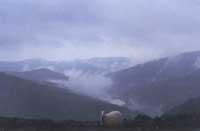
We have only to approach this land that offers us a special human footprint, vegetation and fauna.
To do this, we must address the City of Donostia-San Sebastian communicating our intentions to its responsible.
People will find it in the surroundings of a swamp that is normally in the center, but we will have many possibilities to enjoy anywhere in this wonderful land.

Gai honi buruzko eduki gehiago
Elhuyarrek garatutako teknologia



